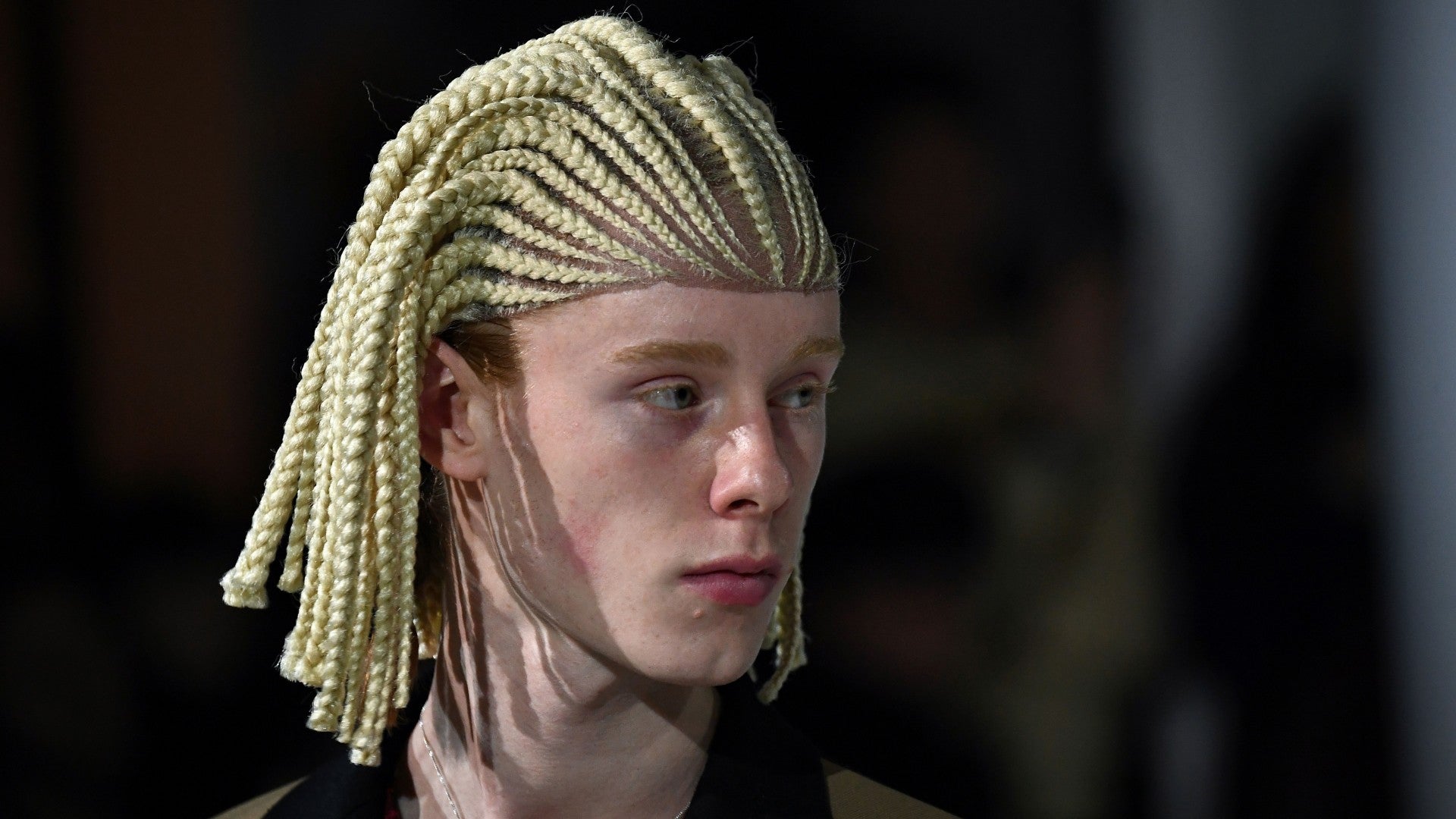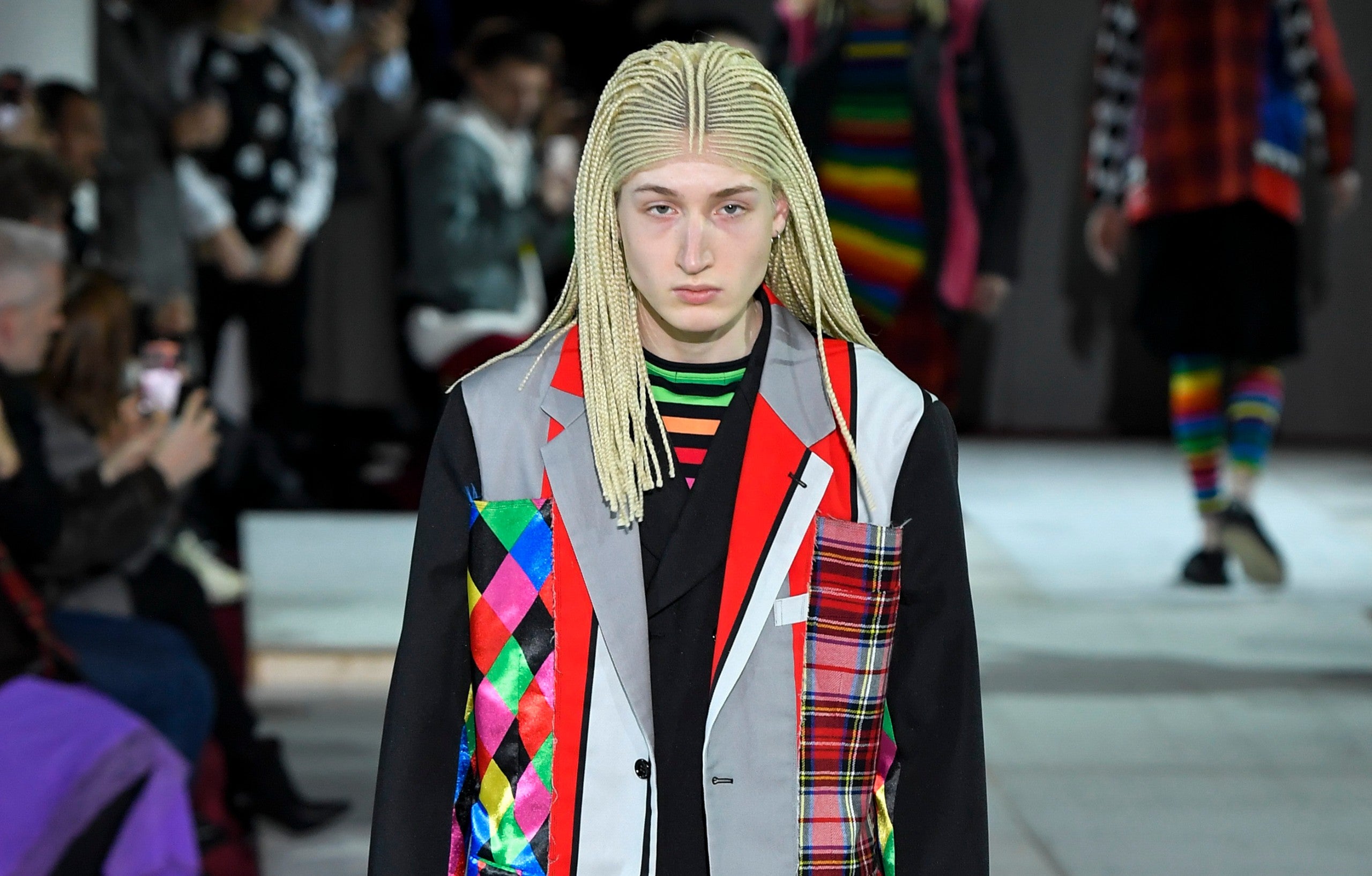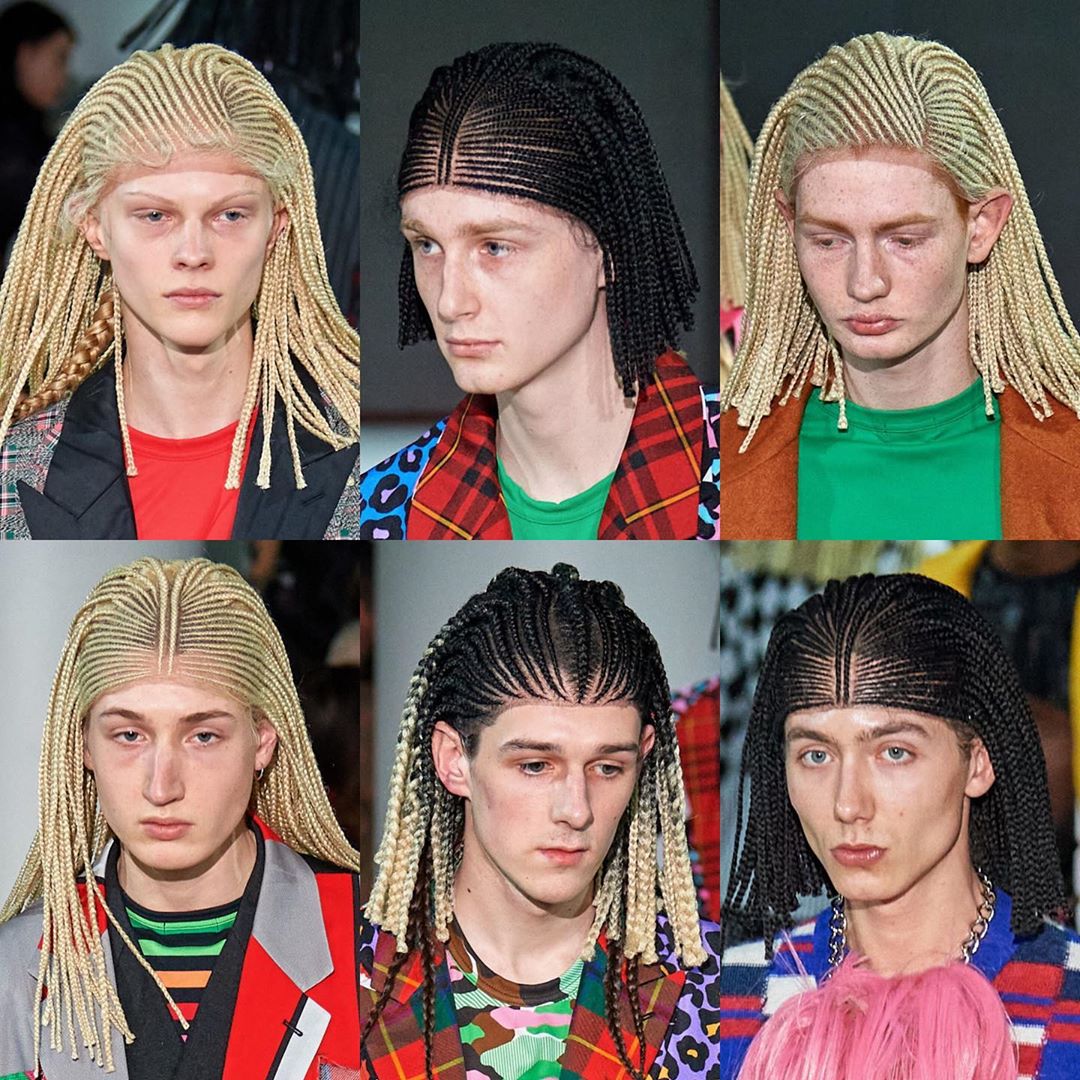
When I first saw the wigs at the Comme des Garçons Fall/Winter menswear show I laughed. It was early Saturday morning, and a colleague had sent me a post from Diet Prada’s Instagram addressing the hairpieces. Simply put, they looked ridiculous.
As an avid wig wearer I was confused about what the hairstylist was trying to do with the visible lace pulled so far down the front of the models’ faces. A moment after I stopped laughing about the look of the wigs, what actually happened had settled in.
Immediately I began scrolling through the comments on the post, where Diet Prada was blasting the brand for the blatant misfire. As I read them I was tempted to respond, mentally clapping back at all the decriers of appropriation, shooting historical fact bullets at all the folks crediting art, not racism, and dragging anyone who dare fall back on the cheap and overused vitriol that Black people are being “too sensitive” yet again.

One commenter went as far as to say, “I think that all this political correctness and ‘cultural appropriation’ kumbaya is killing what fashion is supposed to be: FUN. We carry on like this and we’ll all be wearing polyester black suits, no makeup and limpy hair.”
Ummm, okay.
I suppose it’s all fun until the joke is on you. But the joke is too often on Black people and we’re not laughing. Even now, I’m sure someone saw my headline and rolled their eyes. Are Black people still angry about this show from last week?
Just days following the Comme des Garçons runway show, Deandre Arnold from Mont Belvieu Texas was suspended from school and told that he would not be allowed to walk in his graduation if he doesn’t cut his locs. This past summer, Fort Worth, Texas teenager Kerion Washington was turned down for a job at his local Six Flags for refusing to cut his locs. In October, Khalisa Rae Thompson was surcharged a “textured” hair fee at an Aveda salon in Raleigh, North Carolina. She was told that it was because more product had to be used on her hair.
Even in Harlem over the holidays, two young girls were prohibited from participating in “Black Nutcracker” because they wore their hair in braids. I could do this all day (and by the time I’m done a new story of Black hair discrimination will have emerged).
While the CROWN Act has been passed in California, New York, and New Jersey to date, these incidences are still happening at alarming rates. And there are countless stories that haven’t been reported. Senator Cory Booker is working to take CROWN to the federal level so that we don’t have to wait for the remaining 47 states to act, but we know all too well that legislation alone doesn’t change the climate.
What the supporters of the CDG wigs fail to understand is that Black people’s lives are deeply affected by the decisions that have been made for us (but not by us) as it pertains to our hair. But calling these wigs cultural appropriation is almost too easy. It was a blatant mockery of the way Black people—Black women specifically—choose to wear their hair.

I reached out to the hairstylist, Julien d’Ys, to see if I could find get a clearer picture of what he had envisioned. And quite frankly, I wanted to ask what the f— was he thinking. He didn’t respond to me, but soon after he posted this note on Instagram:
Dear all, My inspiration for the comme des garçons show was Egyptian prince. A Look I found truly beautiful and inspirational. A look that was an hommage. Never was it my intention to hurt or offend anyone , ever. If I did I deeply apologize.
We see brands do this as a form of shock marketing all the time. They offend, we call for someone’s job, then they apologize, and we all move on to the hottest and latest in the zeitgeist. But this isn’t what happened here. This was a form of hood-gazing. There is a “look at them” factor to this.
It felt like d’Ys and Comme Des Garçons (yes, you are equally responsible) had a laugh at the “ridiculous” lace front wigs that Black women don, and decided to make it even funnier by adding in some of those “ridiculous” braids too. And what kind of braids didn’t matter because to them they’re all the same. Fulani. Egyptian. African, right?
There’s nothing attractive about the wigs. The hair is worn like a caricature costume in the same way that Blackface is. d’Ys’s gaze seems to regard our culture as something that can be taken off and put back on like a humorously ghastly hat. Even if I bought his explanation about the Egyptian inspiration—which I don’t, I know Fulani braids when I see them—it doesn’t explain the shoddy work. I find it difficult to believe that one would pay homage to a culture not their own, and not bother to treat that culture with care and respect.
Designers, creative directors, hairstylists and other fashion industry professionals are very much aware of what appropriation is in 2020. Perhaps the hope is that Blackness as a trend can become more acceptable if Blackness as a joke is the other option. And the hijacking of Black culture for profit will become more palatable, until eventually it goes completely unnoticed.
Throwing the wigs on the models’ heads like Salt Bae throwing seasoning on a dish and expecting us to believe that it’s deference is laughable. But unfortunately, that joke is still on us.





